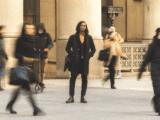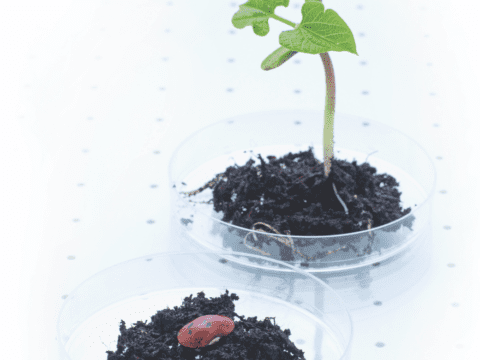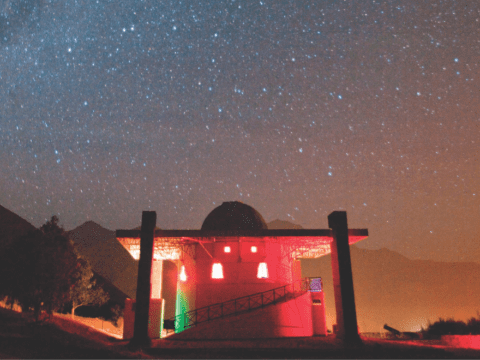The date was a bombshell. It threw open the possibility that this piece of art, representing the very essence of what it means to be human, was painted by a Neanderthal.
All along, archeologists had assumed that human hands had painted the dot. But our species, Homo sapiens, left Africa and began to arrive in Europe in small numbers only about 41,500 years ago, joining throngs of Neanderthals, our closest evolutionary relatives, who had been there for tens of thousands of years.
Could Homo sapiens have made it to Spain that quickly and also figured out how to represent abstract thought in paint for the first time? That scenario seems so unlikely to archeologists that they have started rethinking what defines us as human. It’s humanity’s most self-absorbed, most tantalizing and possibly most important question. The answer can shape how we see our species, ourselves, our society, how we live our lives.
Yet the line between what is human and what is not is getting thinner, as the faint red dot shows. Scientists have been discovering that cherished human trait after cherished human trait is actually shared with other creatures, whether living or, like the Neanderthal, extinct. Art, and therefore abstract thought and representation, had been one of the few still considered exclusively human. And now it’s up for discussion, too.
It turns out that, scientifically, it’s hard to say what exactly makes us human, says John Hawks, an anthropologist at the University of Wisconsin-Madison and an expert on our ancient ancestors. “There is no textbook version of what we now know. It’s exciting. There is no party line.” He adds, “Some people find it frightening.”
And threatening, says Dennis Patrick O’Hara, a theologian and director of the Elliott Allen Institute for Theology and Ecology at the University of Toronto. Even though so many modern humans now treat the Bible’s Garden of Eden story as a myth, it still plays out in human society — Christian and not — as if it were a deep and pervasive reality: The Earth is at the centre of the universe, and we are at the centre of the Earth. We are the reason for Creation.
That’s why human-made laws protect humans and rarely other creatures. It’s why some people say protecting the environment is impossible if a single job is lost. “This is deep. It pervades all aspects of human culture,” reflects O’Hara. And today’s scientific findings turn all that on its head, he says.
In fact, the definition of what makes us human is changing so fast that even many who specialize in the field are running to keep up. Just a decade or two ago, our collective knowledge of ancient humans was limited to the dirt-covered bones that archeologists sedately dug out of the ground, and to fragments of whatever other material had survived over time.
Now, it comes from other tools as well, such as uranium dating, and from techniques that allow us to peer into the DNA of creatures whether alive or extinct, and then use complex mathematical algorithms and supercomputers to crunch their masses of genetic data. “Genetics is a whole different way of doing things,” says Michael Chazan, director of the archeology centre at the University of Toronto. “It’s new for me as an archeologist.”
What it means to be human is a moving target. For example, scientists once thought that the use of tools separated humans from other creatures, Hawks says. Then the primatologist Jane Goodall witnessed chimpanzees using tools in the wild. So that was struck off the list.
Then scientists thought it was language. Now, thanks to recent techniques allowing us to compare the human and Neanderthal genomes, it’s clear that Neanderthals had language, too, because they had the same string of DNA that gives us language, notes Hawks.
And far from being only the brutish, grunting knuckle-draggers humans have often portrayed them as, new information is portraying Neanderthals as more akin to groovy cave-dwelling hippies. They played music, based on the find of a flute made out of a young cave bear’s leg bone. They buried their dead and sometimes seem to have decorated the graves, suggesting that they may well have had some concept of an afterlife.
They breast-fed their babies for more than a year and carefully tended their families. They created clothing and jewelry and had ornamentation, according to other recent findings. They made tools and may even have taught humans how to make them, according to archeological finds at two sites in southwest France.
They had highly organized living spaces, butchering animals, making tools and gathering around fires they had made in tightly compartmentalized areas of their homes. Not only that, but they nursed their wounded and may have used plants for medicine. It all sounds, well, human.
In fact, the Neanderthals were so like humans that we interbred with them, scientists now know, creating individuals who were half human and half Neanderthal. These hybrids went on to have babies and to pass down Neanderthal genes to modern humans.
Today, each non-African human carries as much as two percent Neanderthal DNA, according to a New York Times article by Svante Pääbo, the evolutionary geneticist at the Max Planck Institute for Evolutionary Anthropology in Germany who first mapped the Neanderthal genome — the DNA blueprint. He says that the differences between two individual humans living today can actually be greater than the differences between most humans and most Neanderthals, genetically speaking.
And this just represents what scientists have found so far. Still to come are close examinations of the DNA of other human-like cousins we shared the planet with until quite recently. The Denisovans, another close human relative unknown until the tip of an ancient pinky bone was analyzed in 2010, lived in Asia until they finally went extinct about 30,000 years ago, at roughly the same time as the Neanderthals.
We don’t know much about Denisovans or how they lived because at this point we have no archeological remains apart from a bone and two teeth from a single cold Siberian cave. But because those bits have yielded a complete Denisovan genome, we know we interbred with them, too. Some modern humans from the South Pacific — including New Guineans and Australian Aborigines — carry as much as four percent Denisovan DNA in addition to their Neanderthal genes. And the math of evolutionary genetics tells scientists that the Denisovans were likely a thriving people with a robust global population for hundreds of thousands of years.
A third human-like species, Homo floresiensis, known as the Hobbit, shared the planet with us until as recently as 13,000 years ago, when the last ones went extinct on the Indonesian island of Flores. That’s shortly before our species figured out how to farm.
Archeological remains show that the tiny Hobbits — little more than half as tall as modern humans — had sophisticated lives for the era they lived in, complete with fire and tools. But so far, scientists have been unable to extract DNA from their remains and may never be able to do so because the wet heat of the tropics tends to destroy genetic material.
And there may be other types of humans who have left no record that we’ve found so far. Paleontologists are in hot pursuit of more ancient human fossils in Africa, for example. Many of those human relatives may have lived successfully for hundreds of thousands of years — longer than the 200,000 years our species has been on the planet.
“Somehow, we believe ourselves to be the winners because we survived,” says Hawks. “We want to be able to look back and say, ‘We had something special.’”
And what about our non-human close relatives, the primates? In the past several years, a few more surprises have emerged from new observations in the wild and through new techniques to quickly analyze DNA.
It now appears clear that chimpanzees dream and that, like humans, each chimp has a distinct personality shaped in the first couple of years of life. Chimps have feelings and a sense of personal identity; they’ll spend hours examining themselves in a mirror.
Chimps will kill each other for no good reason, another characteristic once thought to be human alone. They will occasionally, not always, endow an inanimate object with mindfulness, like imagining a teddy bear has real feelings — a capability thought to represent advanced human thought.
Rhesus monkeys can do simple math. Black-and-white snub-nosed monkeys have been seen in the wilds of China acting as midwives for each other. Orangutans in zoos all over the world are using iPads to play simple games and to Skype with each other.
So what makes us human? Katherine Pollard, a biostatistician with the Gladstone Institutes at the University of California, San Francisco, and an expert on human genetics, points to our extremely rare, biologically useful intestinal gifts (most of us can digest starch and lactose, unlike other primates) and some of the fine facial motor skills that help us talk. It’s not exactly the stuff of poetry. Or of predestination.
Pollard is struck, not by our differences from other animals, but by how similar we are to them. Using an ultra-high-powered computer, she compared the letters of the human genome with those of the chimp, our nearest living relative. Of the three billion human letters, all but 15 million match the chimp’s, meaning that we are more than 99 percent the same as chimpanzees, genetically speaking.
She discovered an intriguing string of 118 letters of DNA that contains 18 variations — all changed since our two species split from our common ancestor six million years ago. The string governs the development of the brain’s outer layer and may explain some of the differences between the two species. Eventually, Pollard may be able to point to specific letters of the human genome that make us human, offering perhaps an even less poetic definition of humanness than our digestive quirks. And that definition — whatever it is — can have consequences. Saying that a certain set of characteristics is human is saying that another is not, as Chazan warns. It has the potential to marginalize or deprive some of their rights.
A glance back through history provides a list of some who have, at different times and places, been excluded from the list of who is fully human: women, children, newborns, the Irish, the dark-skinned, the enslaved, the poor, those vanquished in war, the differently abled and those who believed in a different Supreme Being than those who wrote the rules. The discussions keep taking new forms. A recent case in New York sought to have human rights assigned to captive chimps.
Scientists have long been immersed in this discourse. The English naturalist Charles Darwin faced howls of outrage from scientists when he argued in the 19th century that humans of all skin hues are the same species, going against the many scientists who believed that some humans were more human than others. And the most precious and best human of all was the white-skinned European.
But that was just one way Darwin’s new understanding of what makes us human shocked the scientific world. His assertion that all creatures evolved from common, single-celled ancestors whose genetic makeup changed over time to produce the planet’s myriad life forms was also horrifying to the scientists of his day. Back then, most scientists believed that God had made the world and all its creatures in six days, just as the Book of Genesis said. And it was all for the benefit of humans, the sole creatures made in His image, the highest, most privileged creatures of all.
Darwin also concluded, traumatically, that in the process of evolution some creatures died out while new ones were created. This explained the dinosaur bones that were beginning to be dug up around that time.
It was also a hint that evolution might continue. We, the favoured children of God, might be replaced in our turn by creatures yet unimagined, supplanted as masters of the kingdom. Darwin’s theory challenged the common understanding of what humans are for, how we fit in.
To O’Hara, today’s scientific findings push that challenge even further. Rather than being the privileged controllers or even the stewards of the Earth, we are vulnerable, not just graciously sharing our space with other creatures but highly dependent on them. “If you think of the evolutionary process, the later you came to be, the more dependent you are on everything that came before,” he says.
Yet for all our reliance on other creatures, for all our similarities and the slenderness of the list of genetic characteristics that set us apart, now that we’ve survived, humans are undeniably different from other species that went before, Chazan points out. And in profound ways.
We alone have driven many other creatures to the brink of extinction, including our nearest relatives, the planet’s other great apes: chimpanzees, gorillas, bonobos and orangutans.
Our numbers have grown to seven billion. We have developed intricate systems governing human life: political, social, financial, medical and religious, to name a few. We have beaten back disease, created new life forms — such as wholly synthetic cells — and even printed human organs on 3-D printers. We have travelled to the moon and back. Uniquely in modern times, we have altered the chemistry of the planet’s atmosphere and ocean through our species’ actions, primarily the burning of fossil fuels.
To Hawks, Pollard and Chazan, the answer to how we’ve been able to do all this, given the relatively few biological differences we have from other creatures, is partly cultural. “Culture can evolve very quickly, more quickly than biology,” says Pollard — even more quickly when there are so many humans living in such close proximity. We learn from each other. Babies are not born reading, for example.
Hawks points to scientific knowledge. Human society has educated billions of people in scientific thought and has produced hundreds of thousands of scientists who have built on their colleagues’ findings to produce ever more insights. It’s exponential growth. The record book of human knowledge has become immense and easy to access.
He compares that to groups of earlier humans who likely lived in clans of 20 or fewer, isolated from each other. Human innovations were more fragile then, much harder and slower to pass on.
So what makes us human?
Most of it is still a mystery. A few letters in our DNA. Some muscles in our faces. The odd intestinal enzyme. All the species that came before us. Our shared history and genealogy. Perhaps the most important thing is the degree to which we’re different from other species. Not what we can do but, now that we’ve survived, how well.
After all, a Neanderthal may have painted that red dot. But it was a human who painted the Sistine Chapel.
***
This story first appeared in The United Church Observer’s July/August 2014 issue with the title “Debunking the human myth.”















